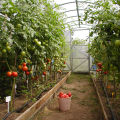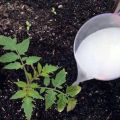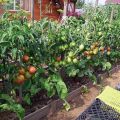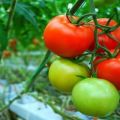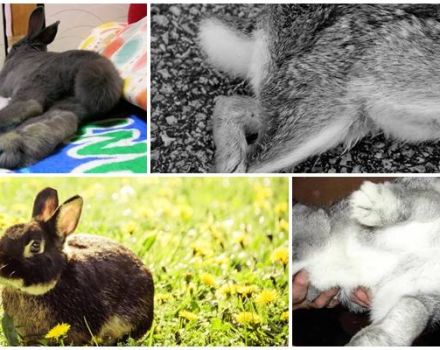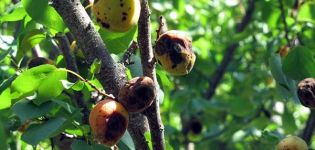Description of the tomato variety Yellow cap, its characteristics and yield
The tomato variety, called the Yellow Cap, became the development of Russian breeders and in 2011 was included in the state register. The culture is intended for growing in shelters and in open spaces. The plant belongs to the determinant type and does not require additional actions to stop growth. Bushes of small growth no more than 50 cm high are compact, have a not very developed rhizome, which is characterized by lateral development. Thanks to this feature of tomatoes, the plant is able to bear fruit when grown in flowerpots on the windowsill.
The tomato is an early ripening species. After planting, on average, it takes 80 to 90 days until the first fruits are removed. The strong stem of the plant allows the bushes to withstand large quantities of tomatoes. Due to the early ripening period, the tomato is not susceptible to late blight.

Advantages and disadvantages of the variety
Gardeners note that the culture has both advantages and disadvantages. The benefits of tomato are:
- short time required for tomato ripening;
- beautiful appearance of tomatoes;
- rich tomato fruit flavor;
- resistance to most diseases.
The disadvantages include low yields and the inability of fruits for long-term storage, but this deficiency is compensated for by the excellent taste of tomatoes. Tomatoes are suitable for fresh consumption, including in salads. Vegetables do not lose the usefulness of the composition when frozen. When adding tomatoes to dishes, they give them a rich taste. Due to the thick skin, the fruits tolerate heat treatment well and do not deform, therefore the variety is recommended for canning.
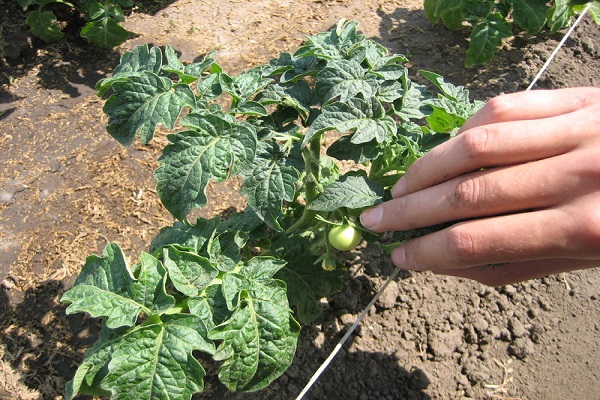
Fruit characteristics
Ripe round fruits have a rich yellow color. Until ripening, tomatoes have a pale greenish tint. The average fruit size is from 3 to 4 cm. Tomatoes have a dense skin, smooth and shiny surface.
The pulp of a tomato is juicy, contains a small amount of seeds. Reviews of gardeners speak of the rich aroma and sweet taste of the fruit. The average value of the harvested per plant is 0.5 kg. Some bushes, subject to correct cultivation techniques, are capable of giving up to 3 kg. Plants are sensitive to lack of light, so additional lighting is required when grown at home in winter.
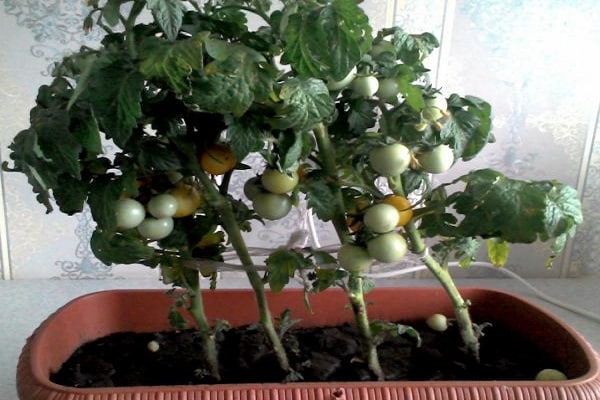
The fruit is characterized by good crack resistance. The problem of the appearance of fruit defects is associated with sudden changes in humidity due to temperature changes day and night. The recommended moisture value for growing is 60%.
Growing recommendations
Outdoor cultivation is permissible only in areas with a warm climate. In the northern regions, planting in a greenhouse or flowerpots is preferable. Before planting, it is recommended to disinfect the seeds with a weak solution of potassium permanganate. For this, the planting material is placed for 1 hour in a container with a solution, after which it is washed with warm water.

It is recommended to choose a loamy soil with a low acidity index. Seeds are planted at a ground temperature of at least 25 C. It is worth deepening the material no more than 2 cm.The distance between the recesses should also be 2 cm.
After planting, the container is covered with a film, which is removed after emergence.
When diving, the volume of the seedling pot must be at least 300 ml. Transfer to a place of permanent cultivation is carried out on day 50. When planting in a greenhouse, it is recommended to leave a distance between the bushes of at least 50 cm.In order to grow a plant and get a crop, it will not take much time and effort, since the variety does not require pinching and is considered unpretentious.


